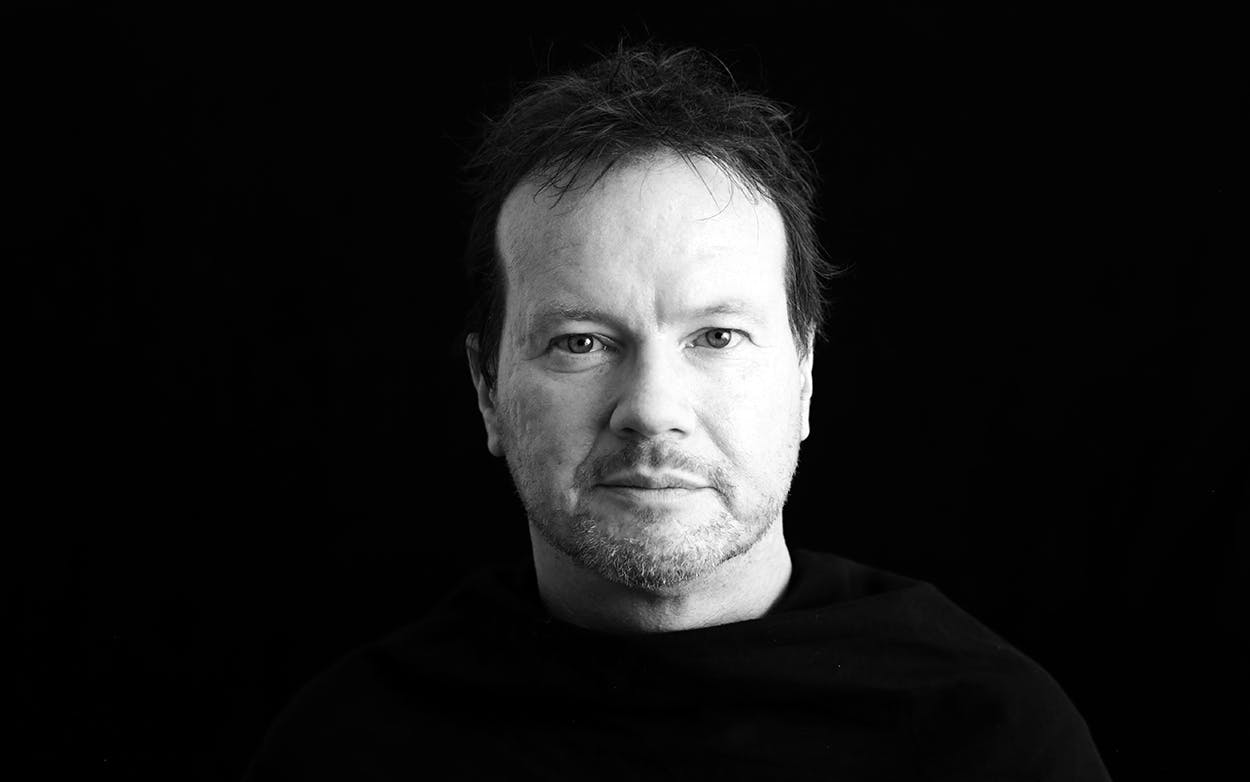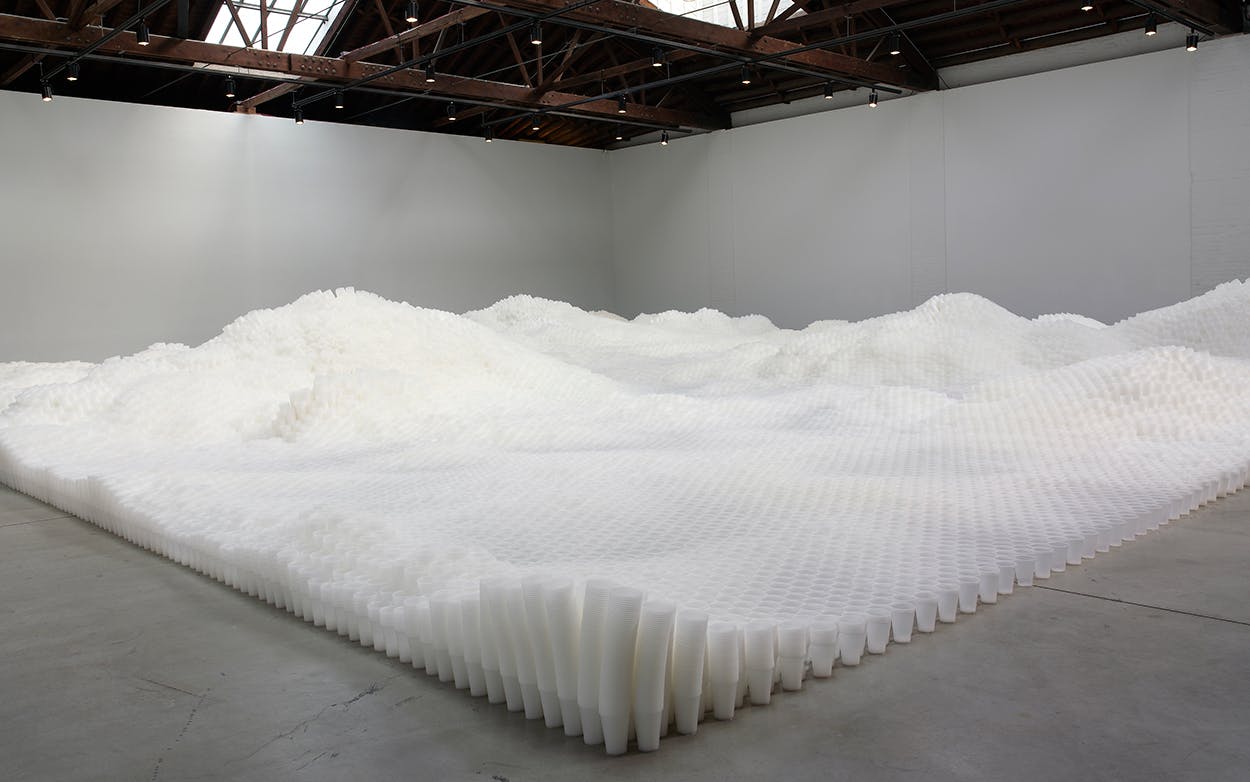Texas is not a region often celebrated for its contributions to the millennia-old discipline of philosophy, but that’s just one more old assumption for Timothy Morton to subvert. For Morton—an Englishman who teaches at Rice University and has attracted an international following for his writings on the ways we think and talk about big, modern-day problems like climate change—Houston is an ideal muse for the sorts of problems he loves to wrestle with.
“The difference about Houston is, it’s so explicit,” Morton says, comparing the region favorably to his last academic posting, California, where the industrial infrastructure underpinning modern life is more concealed. “In a way, it’s an incredible relief, whether you like or you don’t like the oil thing, to be like, ‘Look, this is what we do. We have these giant metallic chemistry sets, and they do this thing, and this thing makes your car go.’ ”
The specter of global warming can easily overwhelm people—it’s hard to reckon with future droughts, extinctions, and hurricanes when you’re preoccupied with buying groceries and taking the kids to camp. That creates a cognitive dissonance, as we tend to repress global issues as we go about the business of everyday life. Morton engages with that friction head-on in his books, which, though far from breezy reads, have catapulted him into the unusual role of hip, eco-savvy philosopher-celebrity. His academic biography boasts of collaborations with mega-star artists like Bjork and Pharrell Williams; as Ballroom Marfa director Laura Copelin puts it, “It’s like he’s on a different continent every second.”
As Morton sees it, his work resonates with artists because it addresses how we think and talk about issues like global warming, rather than glumly presenting the facts. “Usually the eco-article is very, very doomy, and sort of, ‘Oh, look at the polar bears,’” he says. “It’s so oppressive the way that we talk to ourselves about it; it’s like we’re all in shock mode. Instead of pointing at polar bears, I’m pointing at how we point at polar bears. I think that’s why it has caught on, because it’s already aesthetic. It’s already experiential. It’s not a concept, it’s an experience. That’s very appealing to artists.”
When the Museum of Modern Art in New York exhibited a mid-career retrospective of Bjork in 2015, in lieu of an artist’s statement, the Icelandic pop musician and style icon published a written exchange with Morton in which she asked the philosopher to “help define what ‘ism’ I am.” More recently, Morton has popped up as a floating digital head spouting wisdom in an immersive art museum exhibition in Barcelona, as a figure in the upcoming Jeff Bridges-narrated documentary Living in the Future’s Past, and as the inspiration for a new line of futuristic clothing from high-end designer Abasi Rosborough.
This weekend, Texas art audiences will get their own introduction to Morton-mania as Ballroom Marfa opens Hyperobjects, which will run April 13 through fall 2018. The exhibit is a survey of artworks and archeological objects inspired by Morton’s philosophical writings — about twenty contributions in all, from work-in-progress installations to loaned artifacts to works from emerging stars like Postcommodity and Rafa Esparza.
To Copelin, who co-curated the exhibit with Morton, the philosopher’s work prompts readers to recognize the impact of global warming by changing their frame of reference. “[Morton] is trying to kick-start an ontological upgrade,” says Copelin, using a philosophical term for the study of the nature of being. “He makes the spinning motion of the Apple update you get on your phone, and he says: In order to tackle these problems, you have to update your notions of art and the world, get past Copernicus, and understand that we are not the center. You have to see things in a different way in order to see big solutions to the problems that face us.”
To begin that task, Morton coined the word “hyperobjects,” which he defines as things that take up time and space far beyond a human scale, like the solar system or the Florida Everglades. But quotidian things can be hyperobjects, too—a Styrofoam cup can take more than a million years to decompose. “They’re titanic, but they’re not godlike,” Morton says. “What’s the word for that?”

Morton is most interested in using the new term to discuss scientific concepts like global warming, climate, and the Earth, which we mostly know about through measurement, exploration, and pattern-observation. It’s his conviction that, by being more attentive to the hyperobjects in our midst, we will be forced to take a humbler view of ourselves—in part because we understand now that our future depends on it.
The Ballroom Marfa show is full of projects and artifacts that stretch a viewer’s frame for observing time and space. Much of what’s on display is tied to West Texas’s deep history and advanced industry. The Long Now Foundation, which has been building a clock to last 10,000 years under a mountain near Van Horn, has contributed a piece of clockwork. McDonald Observatory contributed a sample of glass from a telescope built to see far enough back in space-time to measure light from the Big Bang. Sul Ross State University in Alpine contributed local rock samples formed 1.4 billion years ago and others just exposed in the past few years at an active rock formation area in the nearby salt flats.
Most of what’s on display in Marfa showcases how human imagination intersects with Morton’s ideas, though it’s not always clear if Morton inspired the artist or vice versa. For example, Tara Donovan’s “Untitled (Plastic Cups)” (2006), which creates an undulating seascape (or dunescape) out of the stacked, disposable objects, was reproduced as a photo in Morton’s 2013 book. With other works in the show, however — like Megan May Daalder’s “Mirrorbox” (2014), a sort of double-helmet that invites two viewers to insert their heads and sit in contemplation of themselves and each other as their faces are mixed and remixed — the direction of inspiration is anyone’s guess.
For an exhibition about the end of the world, the mood of the Ballroom Marfa exhibit is far from defeatist. This is in keeping with something Bjork wrote about Morton for her MoMA show: “I guess he is SWERVING the apocalypse angle into hope, or at least there is an attempt.”
Morton seems to agree with that interpretation. Even after watching his adopted city get battered by Hurricane Harvey last year, his outlook is surprisingly upbeat. “Here’s this massive object above your head, and it’s not moving, and it’s like being in the worst ever Independence Day, alien-invasion movie, and it’s a hyperobject,” he says, recalling the excruciating week last summer when the rain kept coming and the wind wouldn’t change. “All of a sudden you’re on hurricane time. Everyone forgot their human timeframe, and we were under the sway of a non-human timeframe for a minute.”
Morton was impressed by the way Houstonians rose to the occasion, banding together in a spirit of mutual aid to face the challenge that Hurricane Harvey presented. He hopes to help more people feel that surge of uplift and excitement—only next time, on a global scale. “The amazing solidarity feelings that happened after that or during that were already enabled by the city that Houston is,” he says. “My message is not a message of doom. It’s more like, ‘Here are these massive things, now we have a word for them. We can understand them. We can do something about them. We can make them go away.’ ”
- More About:
- Art






